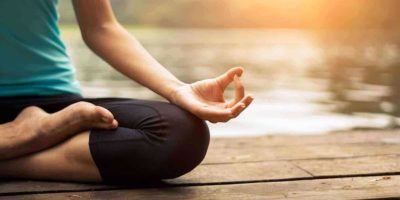
I ricercatori hanno scoperto che rispetto ad altre attività fisica, lo yoga migliora la resistenza e la flessibilità del corpo e contrastava la depressione.
The effects of yoga compared to active and inactive controls on physical function and health related quality of life in older adults, systematic review and meta-analysis of randomised controlled trials
Lo yoga può essere molto utile anche per chi è in età avanzata secondo uno studio prodotto da un gruppo di ricercatori dell’Università di Edimburgo.
Secondo questi ultimi gli anziani che praticano yoga hanno probabilità migliori di avere Un’ottima forma fisica e mentale.
Yoga migliora forza muscolare ed equilibrio
In particolare lo yoga aiuterebbe a migliorare la forza muscolare nonché l’equilibrio la flessibilità. Per quanto riguarda il profilo mentale, lo yoga sarebbe d’aiuto per contrastare La depressione e per migliorare la qualità del sonno e in generale della vitalità degli anziani.
Yoga migliore per anziani rispetto ad altre attività
I ricercatori hanno analizzato 22 studi precedenti i quali a loro volta analizzavano proprio gli effetti benefici dello yoga sul corpo umano e in particolare sul corpo degli anziani e sulla loro mente.
Combinando i vari dati, i ricercatori hanno scoperto che rispetto ad altre attività fisica, lo yoga migliorava la resistenza del corpo inferiore, la flessibilità del corpo e contrastava la depressione.
Scienziati: yoga ha grande potenziale per anziani
Secondo Divya Sivaramakrishnan, uno degli autori dello studio, “Gran parte degli anziani sono inattivi e non rispettano le raccomandazioni sull’equilibrio e il rinforzo muscolare stabilite dalle organizzazioni sanitarie internazionali. In base a questo studio, possiamo concludere che lo yoga ha un grande potenziale per migliorare importanti risultati fisici e psicologici negli anziani adulti. Lo yoga è un’attività delicata che può essere modificata per adattarsi a coloro che presentano condizioni e malattie legate all’età”.
https://notiziescientifiche.it/yoga-migliora-salute-in-eta-avanzata-secondo-studio/
The effects of yoga compared to active and inactive controls on physical function and health related quality of life in older adults, systematic review and meta-analysis of randomised controlled trials
Divya Sivaramakrishnan, Claire Fitzsimons, Paul Kelly, Kim Ludwig, Nanette Mutrie, David H. Saunders, Graham Baker
Physical Activity for Health Research Centre (PAHRC), University of Edinburgh, St Leonard’s Land, Edinburgh, EH8 8AQ, UK
International Journal of Behavioral Nutrition and Physical Activity 16, Article number: 33 (2019
Abstract, Background
Yoga has been recommended as a muscle strengthening and balance activity in national and global physical activity guidelines. However, the evidence base establishing the effectiveness of yoga in improving physical function and health related quality of life (HRQoL) in an older adult population not recruited on the basis of any specific disease or condition, has not been systematically reviewed. The objective of this study was to synthesise existing evidence on the effects of yoga on physical function and HRQoL in older adults not characterised by any specific clinical condition.
Methods
The following databases were systematically searched in September 2017: MEDLINE, PsycInfo, CINAHL Plus, Scopus, Web of Science, Cochrane Library, EMBASE, SPORTDiscus, AMED and ProQuest Dissertations & Theses Global. Study inclusion criteria: Older adult participants with mean age of 60 years and above, not recruited on the basis of any specific disease or condition; yoga intervention compared with inactive controls (example: wait-list control, education booklets) or active controls (example: walking, chair aerobics); physical function and HRQoL outcomes; and randomised/cluster randomised controlled trials published in English. A vote counting analysis and meta-analysis with standardised effect sizes (Hedges’ g) computed using random effects models were conducted.
Results
A total of 27 records from 22 RCTs were included (17 RCTs assessed physical function and 20 assessed HRQoL). The meta-analysis revealed significant effects (5% level of significance) favouring the yoga group for the following physical function outcomes compared with inactive controls: balance (effect size (ES) = 0.7), lower body flexibility (ES = 0.5), lower limb strength (ES = 0.45); compared with active controls: lower limb strength (ES = 0.49), lower body flexibility (ES = 0.28). For HRQoL, significant effects favouring yoga were found compared to inactive controls for: depression (ES = 0.64), perceived mental health (ES = 0.6), perceived physical health (ES = 0.61), sleep quality (ES = 0.65), and vitality (ES = 0.31); compared to active controls: depression (ES = 0.54).
Conclusion
This review is the first to compare the effects of yoga with active and inactive controls in older adults not characterised by a specific clinical condition. Results indicate that yoga interventions improve multiple physical function and HRQoL outcomes in this population compared to both control conditions. This study provides robust evidence for promoting yoga in physical activity guidelines for older adults as a multimodal activity that improves aspects of fitness like strength, balance and flexibility, as well as mental wellbeing. https://ijbnpa.biomedcentral.com/articles/10.1186/s12966-019-0789-2, https://www.ed.ac.uk/news/2019/yoga-improves-health-in-later-life-study-says